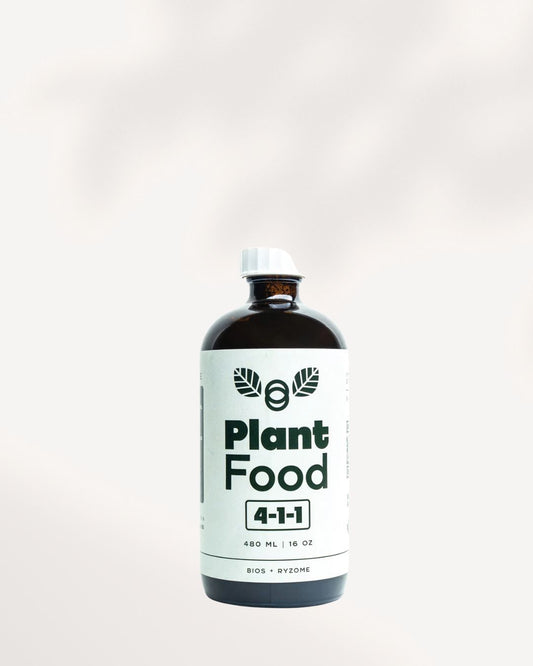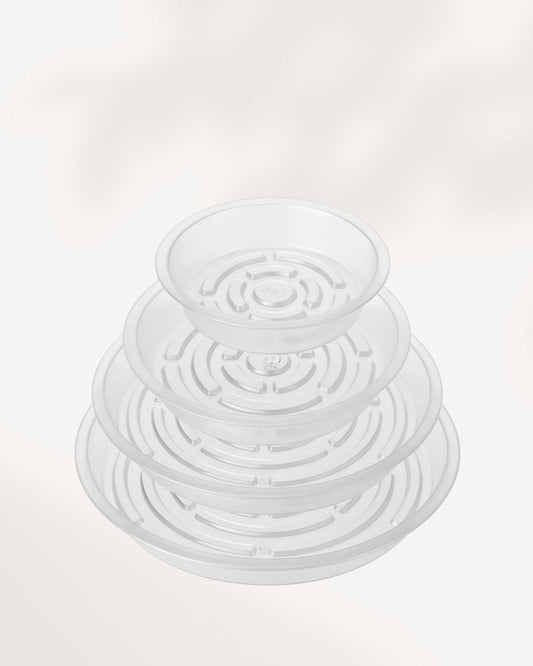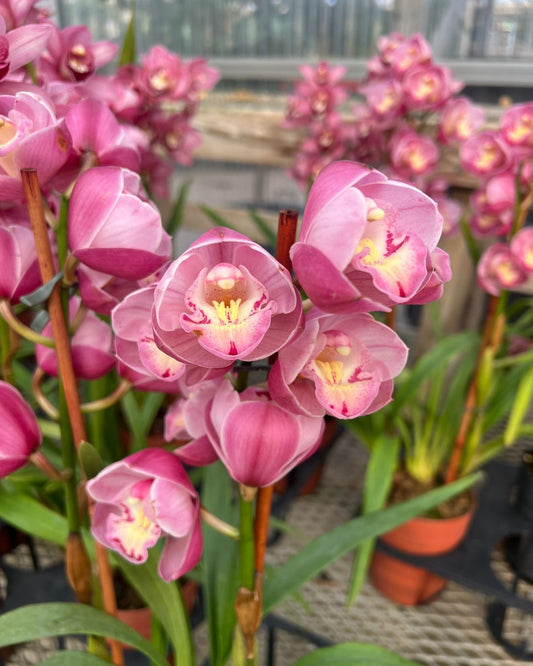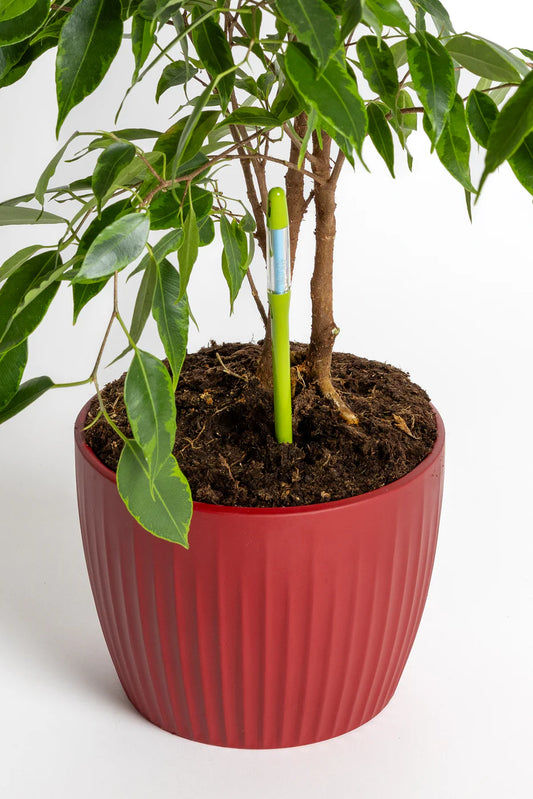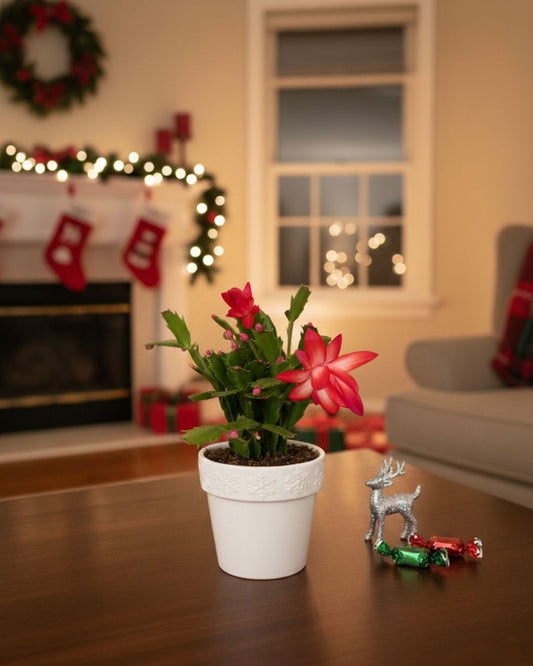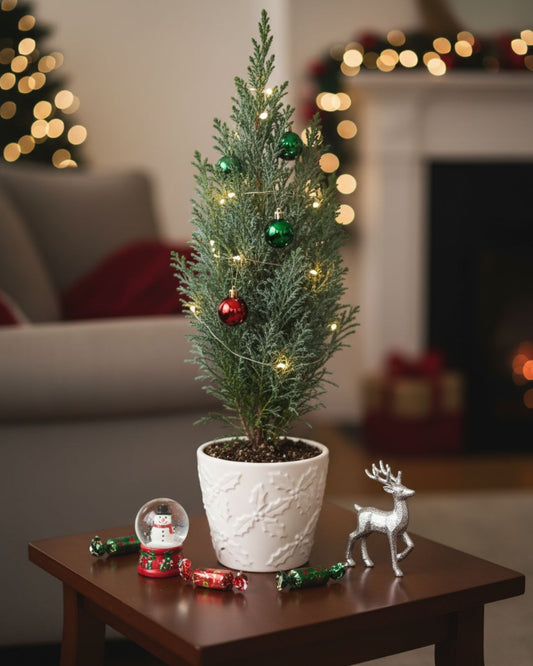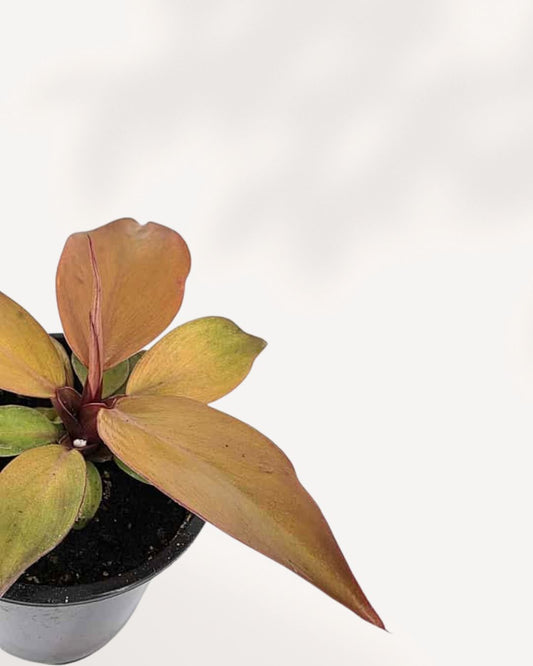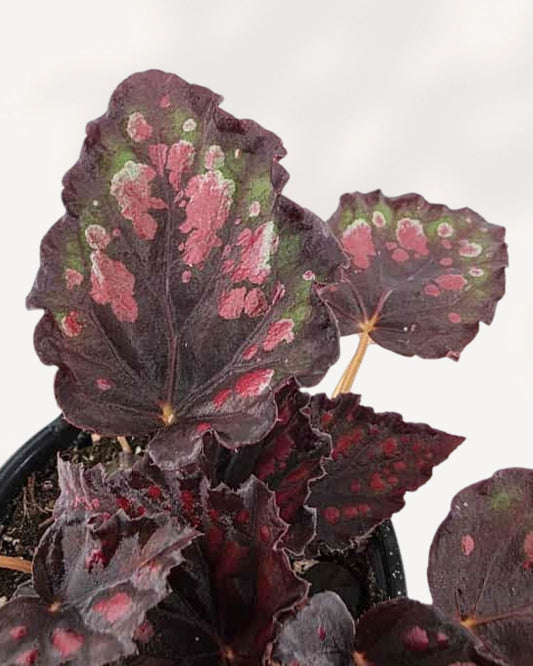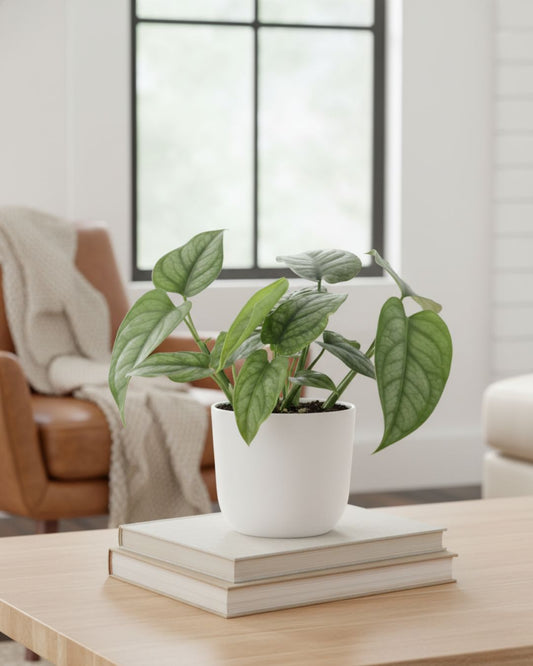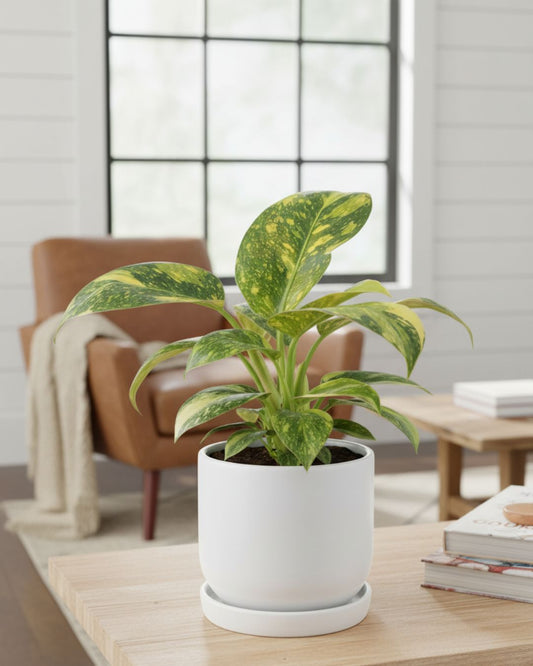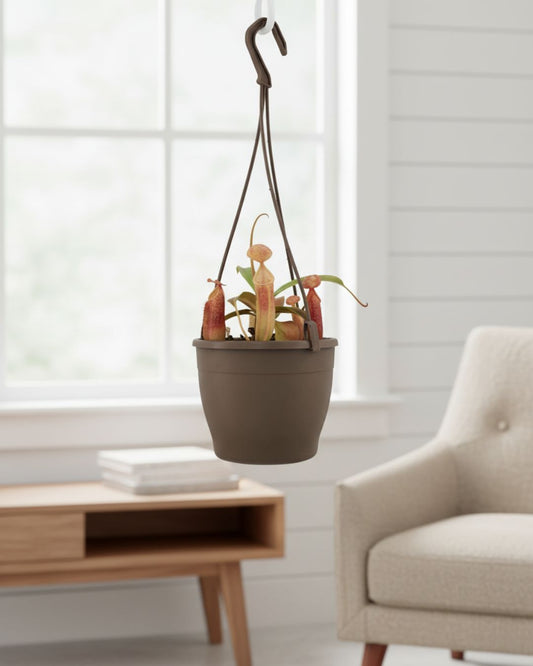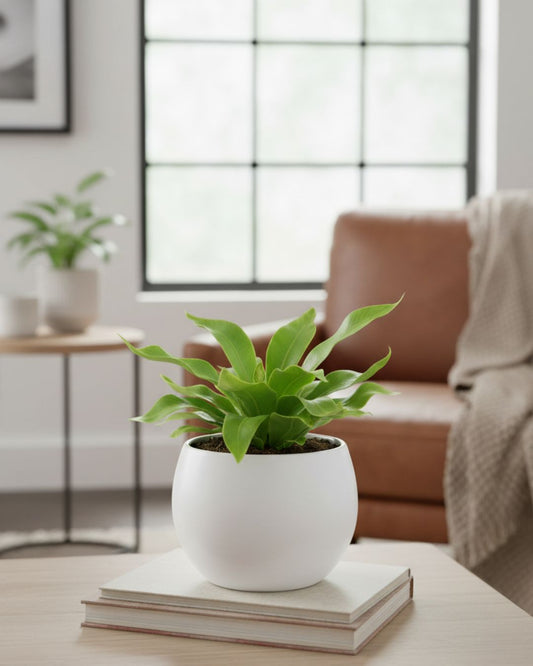How to care for Terrarium Plants
| Back to Library |
Quick Care Overview
| Care Aspect | Details |
|---|---|
| Light | Bright, indirect light or filtered sunlight. Avoid direct sunlight to prevent scorching. Learn More |
| Water | Water sparingly; mist plants weekly to maintain humidity. |
| Soil | Use well-draining soil with moss or charcoal layers for moisture control. Shop Potting Mix |
| Temperature | 60–75°F (16–24°C); avoid cold drafts. |
| Humidity | High humidity is essential; mist regularly or use a humidifier. |
Terrarium Plant Care Guide | Build & Maintain Your Mini Garden
Create a thriving miniature ecosystem with terrarium plants! Learn how to care for your terrarium with expert advice on watering, light, and maintenance.
Best Plants for Terrariums
- Fittonia (Nerve Plant)
- Ferns
- Moss
- Air Plants (Tillandsia)
- Pilea
Terrarium Types
- Closed Terrarium: Best for humidity-loving plants like ferns and moss.
- Open Terrarium: Ideal for succulents and air plants that prefer drier conditions.
Light Requirements
Place your terrarium in bright, indirect sunlight. Direct sunlight can overheat closed terrariums. Learn more about light needs.
Watering Needs
Closed terrariums need minimal watering—mist lightly every few weeks. Open terrariums should be watered when the soil feels dry.
Soil Preferences
Use a light, well-draining potting mix. Add layers of rocks, activated charcoal, and moss for drainage and odor control. Shop Potting Mix
Temperature & Humidity
Terrarium plants thrive in temperatures between 60–75°F (16–24°C) with high humidity. Closed terrariums naturally maintain humidity, while open ones may need occasional misting.
Fertilization
Feed plants sparingly with diluted liquid fertilizer once every 2-3 months. Over-fertilization can harm terrarium plants. Explore Natural Fertilizers
Maintenance Tips
- Wipe condensation off glass walls for proper airflow.
- Prune plants to prevent overcrowding.
- Remove dead leaves to avoid mold growth.
Propagation Tips
Cuttings
Propagate plants like Fittonia by taking stem cuttings and placing them in moist soil or water.
Division
Divide clump-forming plants during repotting to encourage healthy growth.
FAQs
How often should I water my terrarium?
Closed terrariums need watering every 4-6 weeks; open ones when the soil is dry.
Why are my plants wilting inside the terrarium?
Overwatering or poor ventilation may cause wilting. Check for proper drainage and reduce watering.
Can succulents grow in a closed terrarium?
No. Succulents need dry, open-air environments and are best suited for open terrariums.
The Positive Impact of Plants
-
Plants and Healing
Working with plants soothes the mind. It feels calming and healing, offering a peaceful break from daily life.
-
Plants for Recovery
Being around plants can speed up healing from sickness, making you feel better quicker in a natural way.
-
Plants and Work
Plants in your space may make your work better and faster, enhancing focus and creativity during tasks.
LETTING CUSTOMERS SPEAK FOR US!
Shop by Feature
FAQs for Plant Delivery in Ontario & Quebec
What types of house plants do you offer for delivery.
We offer a wide variety of houseplants for delivery. Here are some of the popular options: Aglaonema, Alocasia, Calathea, Hoya, Monstera, Palm, Peperomia, Philodendron, Pothos, Sansevieria Snake, Syngonium, Tradescantia.
What is the lifetime support?
All plants purchased from our store or through our workshops come with lifetime support. This means that whenever you have questions or concerns about your plant, we're here to help. Whether you're unsure about your plant's health or need advice, we can assist in identifying problems, answering your questions, and potentially saving your plant. Feel free to reach out to us on Instagram @mygreenscapeto or via email at support@mygreenscape.ca.
Where do Mygreenscape plants come from?
Our plants embark on a journey from various greenhouses across Canada. We prioritize short delivery routes to ensure your plant arrives happy, healthy, and full of vitality.
Do I have to repot my plants once they arrive?
Absolutely not! When your plant arrives, give it time to settle into its new home. Place it in the desired spot, and let it acclimate for about two weeks.
Favorite in our plant shop
-
Liquid Plant Fertilizer
Regular price From $30Regular priceUnit price per -
Plant Saucer
Regular price From $2Regular priceUnit price per -
Cymbidium Orchid
Regular price $89Regular priceUnit price per -
SUStee Soil Moisture Indicators
Regular price From $12Regular priceUnit price per -
Christmas Cactus
Regular price $12Regular priceUnit price per -
Ellwoodii Cypress
Regular price $18Regular priceUnit price per -
Philodendron 'McColley's Finale'
Regular price $15Regular priceUnit price per -
Begonia Rex 'Harmony Stained Glass'
Regular price $15Regular priceUnit price per -
Monstera Siltepecana
Regular price $15Regular priceUnit price per -
Philodendron Green Congo Nuclear
Regular price $45Regular priceUnit price per -
Nepenthes Sanguinea Pitcher Plant
Regular price $35Regular priceUnit price per -
Cobra Fern
Regular price $18Regular priceUnit price per
MyGreenScape is your go-to online shop for indoor plants in cities Ontario or Quebec, including Toronto, Montreal, and many more. Our mission is to add joy to your home, one leaf at a time. Explore our range of beautiful, air-cleaning plants from the comfort of your home. You can find beautiful indoor plants, pots for plants, garden tools, and hanging basket plants all in one spot. Our mission is to add joy to your home, one leaf at a time.
Buying plants online with us means no more carrying heavy pots or figuring out how to get big plants home. We deliver straight from the gardener to you, with eco-friendly packaging, across Ontario and Quebec. Expect your new green friends within 2-7 days.
Why choose MyGreenScape? Here’s why:
- Lifetime Support: We’re here for you always. Get all the help you need for your plants to flourish.
- 30-Day Happy Plant Guarantee: Not happy with your plant? Tell us within 30 days, and we’ll fix it.
- Easy Delivery: Fast, direct to your doorstep in Ontario or Quebec.
Hear from a happy customer, Sarah T.: "Buying plants was never easier. Quick, simple, and with great support from MyGreenscape."
Ready for easy, stress-free plant shopping? Visit us now and make your home greener. Join MyGreenScape for a hassle-free way to bring nature inside.



















